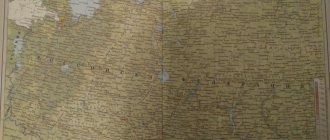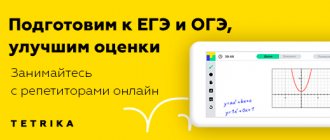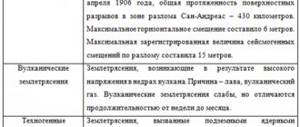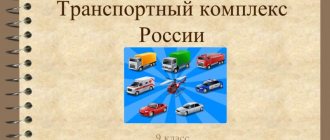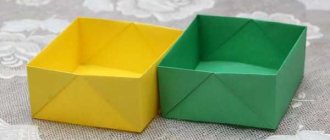Lesson summary in mathematics and geography “Scale”
Integrated math and geography lesson using an interactive whiteboard
6th grade
Lesson topic:
“Scale”
Lesson objectives:
educational
– introduce the concept of scale; teach how to solve problems to find
distances on the ground and on the map, knowing the scale of the map;
developing
– develop the mental activity of students in the classroom;
educational
– development of students’ cognitive interest based on interdisciplinary connections.
Equipment:
interactive whiteboard (on slides there are images of a geographical map, a layout plan, a table with images of the simplest microorganisms, a three-dimensional model of a magnesium molecule). student atlases, measuring compass, curvimeter, ruler, part drawing, apron drawing, apron pattern.
During the classes:
I
. Organization of the beginning of the lesson
Mathematic teacher:
Today we will conduct an unusual lesson - an integrated lesson in mathematics and geography on the topic: “Scale”. You will have to work in two notebooks at once - mathematics and geography.
In previous lessons you were introduced to the concept of attitude. At the beginning of the lesson, we will check how you have mastered the educational material. And then we will learn how the concept of scale is introduced in mathematics and geography and learn how to solve mathematical and geographical problems using scale. At the end of the lesson you will have completed practical work in both Maths and Geography and received marks in both subjects.
II.
Updating knowledge
Mathematics teacher:
-What is the ratio of two numbers called?
(Answer: The ratio of two numbers is their quotient)
- What does the ratio of two numbers show?
(Answer: The ratio of two numbers shows how many times the first number is greater than the second, or what part the first number is of the second)
— How else can you write down the ratio 1:100 and what does it show?
(Answer: ; it shows that the first number is a part of the second number or that the first number is 100 times less than the second)
— What does the ratio 1000: 1 show?
(Answer: This ratio shows that the first number is 1000 times greater than the second)
— How to find the ratio of 200 m to 4 cm?
(Values must be expressed in the same unit of measurement)
— Express in cm: 450 m; 5 km;
(Answer: 450 m = 45,000 cm; 5 km = 500,000 cm)
Geography teacher:
In previous lessons we learned what a site plan is.
— What is called a site plan? (A terrain plan is a drawing that depicts a small part of the earth's surface in a reduced form.)
— How to find out the ratio of distances on the plan to distances on the ground? (To do this you need to know how many times they should be reduced)
III.
Learning new material
Math teacher:
In the last lesson we looked at some problems leading to the concept of relation.
Now we will get acquainted with another common example of the ratio of quantities of the same name, which has a special name - scale. Open your math notebooks and write down the number and topic of the lesson: “Scale.”
In practical life, a person often uses not so much the objects themselves as their images - drawings, photographs, geographical maps. In these images, all distances appear reduced or enlarged.
Geography teacher:
For example, on the map and on the plan all distances are shown in reduced form. But sometimes it is necessary to construct images in an enlarged form, for example, on the table the simplest organisms are depicted with a magnification of thousands of times, and a three-dimensional model of a magnesium molecule is made on a scale of 1,000,000: 1. In the drawing, an image of the same part is given on different scales. During labor lessons, the girls used a special ruler to draw on a scale of 1:4, and also made patterns on a scale of 1:1.
Mathematic teacher:
But the most important thing is that the lengths of all segments decrease or increase by the same number of times, in the same ratio. This number is called the image scale.
Write down the definition in your notebook: The ratio of the length of a segment in the image to its real length is called the scale of the image.
According to this definition, the scale of an image is a number.
The map scale is most often written as a fraction with numerator 1 or as a quotient with dividend 1. For example, or 1: 1,000,000. This means that a distance of 1 cm on the map corresponds to a distance on the ground of 1,000,000 cm = 10 km .
In technical drawings, on the contrary, the scale is often larger than 1 - if you need to depict small-sized parts, for example, parts of a wristwatch. In this case, all dimensions in the drawing, on the contrary, increase by the same number of times.
Now you will get acquainted with the definition of scale, which is given in geography.
Geography teacher:
Open your geography notebooks and write down the date and topic of the lesson: “Scale.”
Distances on the ground are measured using tape measures, measuring tapes, and specialized instruments - theodolites, rangefinders.
Distances measured on the ground are recorded in meters and kilometers.
When depicting terrain on a sheet of paper, you have to reduce the distances and give them in centimeters and millimeters. To do this you need to select a scale. Write the definition in your notebook:
The scale shows how many times the distance on the plan is less than on the ground.
The scale can be written as a ratio of 1:1000 (read: one thousandth).
A scale written in this form is called a numerical scale.
Verbal counting:
Read relationships
1:50, 1:200, 1:5000, 1:10000, 1:25000, 1:50000.
Question to the class:
Which of these scales shows the most significant decrease?
Select the correct answer: “The larger the scale, the more the terrain is depicted (more
less) detailed."
Usually an explanation is written next to the numerical scale, for example: 1 cm is 10 m, i.e. 10000 cm is converted to meters. This means that 1 cm on the plan corresponds to 10 meters on the ground. A scale written in this form is called a named scale, and the distance on the ground corresponding to 1 cm on the plan is called the scale value. Using the scale value is very convenient for determining distances. How long, for example, is the school garden (pictured on the board)? On the plan, the length of the garden, measured with a ruler, is 7 cm, and the scale is 10 m.
This means that the garden has a length of 7 ˟ 10 m = 70 m.
Mathematic teacher:
Let's solve problems.
There are 2 problems written on the board. The solution is written on the board and in discussion notebooks.
Problem 1
. On a map with a scale, the distance between the village and the station is 2.8 cm. Find the distance between them on the ground.
Solution:
Scale means that the distance on the ground is 150,000 times greater than on the map. Therefore, the required distance is
2.8 ˟ 150,000 = 420,000 (cm) = 4.2 km.
Answer: the distance from the village to the station on the ground is 4.2 km.
Problem 2
. The distance between the two cities is 280 km. Find the length of the segment connecting these cities on a map made at a scale of 1: 4,000,000.
Solution:
Since the distance on the map is 4,000,000 times less than on the ground, then 280 km must be reduced by 4,000,000 times. First, let's express this distance in cm, and then perform the division:
280 km = 28,000,000 cm,
28,000,000: 4,000,000 = 7 (cm)
Answer: the distance between cities on the map is 7 cm.
Geography teacher:
To more accurately determine distances or sizes of objects, a linear scale is placed on the plans. It is a straight line divided into equal parts (usually centimeters). On the linear scale (fig. on the board) you see that at a distance of 1 cm from the beginning of the line there is a number 0. From 0 to the right is written the distance on the ground that fits in 1 cm, 2 cm and so on. The centimeter to the left of 0 is divided into equal small parts (Using the linear scale in the figure, calculate what distance on the ground these small parts correspond to.) Usually, when working with a linear scale, a compass meter is used.
We show on the layout plan on the board how to work with a compass according to the plan.
We determine what distance on the ground corresponds to 1 cm of linear scale
and every division to the left of 0;
We arrange the legs of the measuring compass so that the distance between the needles corresponds to the object being measured;
We move the compass to the linear scale of the plan so that its left needle is at 0. If the right needle does not coincide with the division, then move the compass to the left so that the right needle coincides with one of the scale divisions; then the left needle will be on small scale divisions;
Let's count how many large and small divisions are contained between the needles of the compass, and according to
the sum of all divisions determines the width of the measured object.
You can also use a special device - a curvimeter - to measure uneven lines on a plan.
IV.
Consolidate
the solution on the board.
On a map whose scale is 1: 100,000, the distance between two cities is 12 cm. What will this distance be on a map whose scale is 1: 300,000?
Solution:
1) 12 ˟ 100,000 = 1,200,000 (cm) = 12 (km) distance between two cities on the ground
2) 1,200,000 : 300,000 = 4 (cm) distance between two cities on the second map
Answer: 4 cm.
By geography
We solve problems.
Explain what the expressions mean:
a) 1:200, 1:5000; Which of these scales is smaller? (one five-thousandth)
b) in 1 cm – 40 m, in 1 cm – 190 m; Which of these scales is larger? (one
fortieth)
Draw in your notebook a segment representing a distance of 300 m on a scale of 1 cm
– 100 m (Answer: 3 cm) and in 1 cm – 30 m. (Answer: 10 cm)
Which scale is larger? (Answer: 1 cm - 30 m)
V
.
Practical work
Complete the tasks in your math notebooks (item 20).
In geography notebooks (work on an atlas with a physical map).
VI.
Homework
in mathematics: paragraph 20, No. 49.50
Geography: §4 task 6.
VII
.
Lesson summary.
Reflection. The grades for the lesson are as follows: (list of grades with comments). For completing practical work, everyone will receive a grade in mathematics and geography.
Mathematic teacher:
1) What is called scale?
2) How is it recorded?
3) How, knowing the scale, find the distance on the ground? On the map?
Geography teacher:
1) What types of scale have you studied?
2) What is the scale value?
3) When is it more convenient to use each type of scale?
4) In what other lessons, besides mathematics and geography, did you encounter the concept
scale?
Reflection.
Geography lesson 6th grade topic “Scale”
INTEGRATED LESSON
(GEOGRAPHY, MATHEMATICS)
6th grade
Topic: "SCALE".
Goals and objectives of the lesson.
Educational:
application of theoretical knowledge in practice - consolidation of skills in working with geographical maps of various scales and contents; solving practical calculation problems;
application of skills in solving equations written as proportions,
increasing motivation to study school subjects;
application of verification of calculation results using various techniques.
Educational:
organization of independent learning activities;
formation of personality qualities necessary for a person to live a full life in modern society: critical thinking, intuition, logical thinking, communication skills;
formation of interest in search activities;
developing skills for monitoring and evaluating one’s activities.
Educational:
broadening one's horizons, forming a holistic view of the world;
increasing curiosity and the desire to use the skills acquired in class in real life;
development of monologue and dialogic speech; ability to engage in verbal communication.
Metasubject UUD
:
Regulatory:
understand the educational task of the lesson, carry out the solution of the educational task under the guidance of the teacher and independently, determine the purpose of the educational task, control your actions in the process of its implementation, detect and correct errors, answer final questions and evaluate your achievements;
Cognitive:
develop skills in using mathematical definitions of scale, develop problem solving skills on this topic;
Communicative:
cultivate a love of mathematics, geography, history;
cultivate collectivism, proactive cooperation in searching for information, respect for each other, listening skills, discipline, independent thinking.
Personal:
awareness of mathematics and geography as sciences that allow people to navigate the world;
showing attention, a friendly attitude towards others, assessing the content of educational material being absorbed and interest in new knowledge.
Lesson time:
45 min.
Equipment:
atlases, globe, cards on geography and mathematics, drawing of a tree for reflection, writing, dictionary
Board design.
Lesson vocabulary: integration (lat. integration - restoration, replenishment) - the process of bringing together and connecting sciences.
Lesson plan in aphorisms:
- “The beginning is half of everything.” (Pythagoras)
– “Repetition is the mother of learning” (Proverb)
– “Let those who do not know learn, and those who know remember again” (ancient wisdom)
– “It’s not enough to know, you have to apply it, it’s not enough to want, you have to do it” (I. Goethe)
